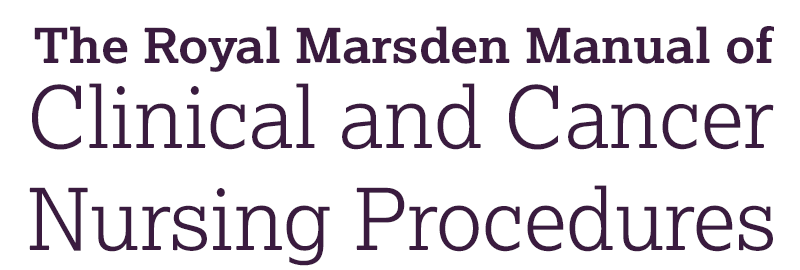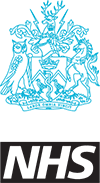Chapter 15: Medicines optimization: ensuring quality and safety
Skip chapter table of contents and go to main content
Clinical governance
Medicines safety, governance and risk management
Medication is the most common intervention in medicine and is a critical component of modern healthcare. Medication has huge potential to do good, but errors can occur at many points in the medication cycle; these can have a significant impact on patients and be a considerable burden on the NHS.
In 2000, the report An Organisation with a Memory (DH [58]) recognized that preventable harms were occurring frequently in the NHS. Following this report, the National Patient Safety Agency (NPSA) and the National Reporting and Learning System (NRLS), a single, national reporting system for patient safety incidents in England and Wales, were set up in 2001 and 2003 respectively. Another national initiative, the Yellow Card Scheme, for the reporting of side‐effects of medicines, was set up in 1964 and is now run by the MHRA.
In 2014, NHS England and the MHRA issued a joint alert Improving Medication Error Incident Reporting and Learning (NHS England [229]), which aimed to improve the quality of data reported by providers and introduce national networks to maximize learning and provide guidance on minimizing harm relating to medication error reporting. In 2016, NHSI became the central body responsible for overseeing patient safety in England and in 2019 it merged with NHS England to form one central body. The WHO Global Patient Safety Challenge was launched in 2017 to reduce the level of severe, avoidable harm related to medications by 50% over 5 years globally. Its three early priority actions focus on polypharmacy, high‐risk situations and transfers of care. These sit within an overarching strategic framework of four domains:
- patients and the public
- medicines
- healthcare professionals
- systems and practices of medication.
Reduction in medication errors will be achieved by encouraging countries and key stakeholders to focus on early action priorities as well as developmental programmes to improve practice and health systems.
Medication errors can include prescribing, dispensing, administration and monitoring errors. Medication errors can result in ADRs, drug–drug interactions, lack of efficacy, suboptimal patient adherence, and poor quality of life and patient experience. It has been reported that:
- an estimated 237 million medication errors occur in the NHS in England every year
- 28% of this total cause moderate or serious harm, and 72% cause little or no harm
- the estimated costs to the NHS of definitely avoidable ADRs are £98.5 million per year; ADRs also consume 181,626 bed days, cause 712 deaths and contribute to 1708 deaths (Elliott et al. [86]).
A review of all medication safety incidents reported to the NRLS between 2005 to 2010 highlighted that incidents involving administration (50%) and prescribing (18%) followed by dispensing or preparation of medicines (16%) caused the highest number of reports. Omitted and delayed medication (16%) and wrong dose (15%) represented the largest error categories (Cousins et al. [47]).
Organizations should have clinical governance structures in place to ensure that medication reporting systems are operating effectively and that important medication safety incidents are addressed locally. Organizations should have defined medication safety roles, such as a medicines optimization lead, a controlled drugs accountable officer and a medication safety officer. Procedures for reporting and investigating near misses and patient safety incidents should aim to support active learning and ensure that the positive lessons learned from these events are embedded into the organization's culture and practices. Learning from incidents and near misses is an essential part of integrated governance and risk management.
Never Events
‘Never Events’ are defined as serious patient safety incidents that are ‘wholly preventable because guidance or safety recommendations that provide strong systemic protective barriers are available at a national level and should have been implemented by all healthcare providers’ (NHSI [239], p.4).
Each Never Event type has the potential to cause serious patient harm or death. However, serious harm or death does not need to have happened as a result of a specific incident for that incident to be categorized as a Never Event. For each Never Event type, there is evidence that the Never Event has occurred in the past and that the risk remains. Occurrence of a Never Event indicates that an organization may not have put the right systems and processes in place to prevent incidents from happening. It is important that when a Never Event happens, the problem is identified and analysed through a comprehensive investigation to understand how and why it occurred, as described in the Serious Incident framework. This will ensure that effective action can be taken to prevent incident recurrence (NHSI [239]).
There are currently five Never Events that are associated with medicines use (NHSI [239]):
- Mis‐selection of a strong potassium solution: this refers to when a patient is intravenously given a strong (greater or equal to 10%, 1 g/mL or 1.3 mmol/mL of potassium chloride) potassium solution rather than the intended medication. There is clear guidance on supply, storage and preparation of potassium containing injectable products as well as prescribing advice. Wherever possible, ready‐mixed intravenous infusions must be used. Note that in addition to potassium chloride solutions for injection, this alert applies to some other potassium‐containing products, such as potassium acid tartrate injection (NPSA [259]).
-
Administration of medication by the wrong route: this occurs when a patient is given one of the following (NPSA [269], [269]):
- intravenous chemotherapy by the intrathecal route
- oral/enteral medication or feed/flush by any parenteral route
- intravenous administration of an epidural medication that was not intended to be administered by the intravenous route.
-
Overdose of insulin due to abbreviations or incorrect device: ‘overdose’ refers to when (NHSI [235], NICE [252], NPSA [275]):
- a patient is given a 10‐fold overdose of insulin because the words ‘unit’ or ‘international unit’ are abbreviated
- such an overdose was given in a care setting with an electronic prescribing system
- a healthcare professional fails to use a specific insulin administration device, that is, an insulin syringe or pen is not used to measure the insulin
- a healthcare professional withdraws insulin from an insulin pen or pen refill and then administers this using a syringe and needle.
- Overdose of methotrexate for non‐cancer treatment: this refers to when a patient is given a dose of methotrexate, by any route, for non‐cancer treatment that is more than the intended weekly dose. It is important to note that such an overdose has been given in a care setting with an electronic prescribing system (NPSA [264]).
-
Mis‐selection of high‐strength midazolam during conscious sedation:
- This occurs when a patient is given an overdose of midazolam due to the selection of a high‐strength preparation (2 or 5 mg/mL) instead of a 1 mg/mL preparation, in a clinical area that performs conscious sedation.
- The guidance does exclude clinical areas where the use of high‐strength midazolam is appropriate: these are generally only those performing general anaesthesia, intensive care or palliative care, and areas where the drug's use has been formally risk assessed in the organization (NPSA [271]).
Patient Safety Alerts are identified using the National Reporting and Learning System to spot emerging patterns at a national level, so that appropriate guidance can be developed and issued to protect patients from harm. Patient Safety Alerts are issued via the Central Alerting System (CAS), a web‐based cascading system for issuing alerts, important public health messages, and other critical safety information and guidance to the NHS and other organizations, including independent providers of health and social care.
All Patient Safety Alerts issued since 2012 can be found on the NHS Improvement website (https://improvement.nhs.uk). Alerts issued prior to April 2012 are available through the archived National Patient Safety website (available via https://improvement.nhs.uk/resources/patient‐safety‐alerts). These older alerts should be used with caution as they were only updated to reflect changes in current safety knowledge until their ‘action complete’ date was reached and some are now over 15 years old. No National Patient Safety Agency (NPSA) publications have been updated since the closure of the agency in 2012, with the exception of key actions still relevant to the Never Events policy and framework. New alerts are released frequently, and all staff are responsible for ensuring that they are followed.





